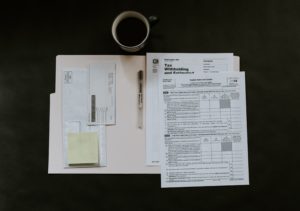Last weekend, I met an old buddy of mine for a cup of coffee in Braintree. “Al” was in town for his daughter’s graduation from Curry College and he was able to squeeze me in for a quick catch up. We were good shipmates at Massachusetts Maritime Academy many years ago – too many, in my mind. As we drank our coffee, we marveled at the fact that we were old enough to have a college-aged girls. And being the old men that we are, we had to grumble about the price of coffee, too. My cup of plain black coffee costs me $2.79 . . . with no refills! Now I know this isn’t a huge amount of money, but for a cup of coffee? Al and I remembered when we could get a decent cup of coffee for fifty-cents at the mess-deck in college. I do remember drinking a lot of fifty-cent coffee during exam weeks, for sure.
You know, this is the work of good ole’ inflation. Al quoted an old saying from Sam Ewing, “Inflation is when you pay fifteen dollars for the ten-dollar haircut you used to get for five dollars when you had hair.” Inflation is a silent killer and in my world of finance we don’t have the luxury of just making jokes about it and moving on. Inflation rarely evokes a positive connotation. And rightfully so. The concept of a dollar being worth less tomorrow than it is today is a scary thought, but a hard reality. So, this week with our time together, I’d like to dig a little deeper into inflation and specifically how it affects those in retirement.
The reason why I am focusing on retirees is because for these folks inflation is a great threat to their retirement security. While younger folks should be very concerned with the housing markets, the high prices of gas and lumber, and other current issues being thrown at us, these issues don’t directly affect seniors significantly.
But there are other rising costs that are hurting many seniors who rely heavily on Social Security in retirement. One key reason for this is that most retirees depend on Social Security benefits for a significant portion of their income. And while Social Security does offer cost-of-living adjustments (COLAs), which are designed to periodically increase to help protect retirees’ income inflation, in reality COLAs are just not as effective as they should be.
COLA increases are tied to the Consumer Price Index for Urban Wage Earners and Clerical Workers (CIP-W). And the issue here is that the index doesn’t necessarily measure the items that seniors spend their money on. And because of this, the index doesn’t adequately account for the primary areas where retirees spend their money, such as food, housing and healthcare – all of which often see faster rising prices than other expenses.
To better understand inflation’s impact on purchasing power, consider this: Just over 100 years ago, a quart of milk cost only nine cents. Fifty years later, the same nine cents allowed you to buy only a small glass of milk. And in today’s economy, nine cents would only get you approximately seven tablespoons of milk.
Hmmm . . . that’s not enough to fill your cereal bowl for breakfast!
In fact, the Senior Citizens League estimates that, over the past two decades, seniors have lost 30% of their buying power over the past two decades. And the loss in buying power is only expected to continue or accelerate with the rising inflation we are experiencing today.
Unfortunately, when prices rise, seniors typically experience either a downgrade in their living standard or they will need to pull more money from their retirement accounts — putting them at risk of draining their nest egg too quickly. Inflation tends to hit the middle to lower middle classes very hard.
So just how badly could high inflation affect seniors? An older study found that with an inflation rate of 1%, seniors relying on the average Social Security benefit alone would see a $34,306 shortfall over a 20-year retirement. When the inflation rate rises to 3% (which could very well be where we’re heading), that shortfall jumps to $117,553. That’s a lot of extra money that has to be pulled from your retirement assets₁.
Unfortunately, there’s little that today’s retirees can do to reverse the trend of rising inflation. As Milton Friedman once said, “Inflation is taxation without legislation.” But that doesn’t mean you can’t prepare for it. For instance, inflation is just another risk, just like market, interest, and longevity risks that must be addressed into a sound investment system . . . a system that should embed a solid downside risk mitigation program (DRM).
Since many retirees cannot rely just on social security for income, their investment system should be designed and deployed to serve as a hedge against inflation. And while investing in stocks and going through periods of volatility involves taking on market risk in exchange for potentially higher returns, incorporating quantatitive data into you DRM system may help to dampen the volatility and just might help you keep that inflation hedge you need for financial success.
So, enjoy that $2.79 cup of coffee now – it’s likely going to cost you more in ten years! But with the right strategy in place, you can be assured that you’ll be able to sustain your caffeine fix throughout retirement.
And as always – be vigilant and stay alert, because you deserve more!
Have a great week.
Jeff Cutter, CPA/PFS is President of Cutter Financial Group, LLC, an SEC Registered Investment Advisor with offices in Falmouth, Duxbury, Mansfield. Jeff can be reached at jeff@cutterfinancialgroup.com.
This article is intended to provide general information. It is not intended to offer or deliver investment advice in any way. Information regarding investment services is provided solely to gain a better understanding of the subject of the article. Different types of investments involve varying degrees of risk. Therefore, it should not be assumed that future performance of any specific investment or investment strategy will be profitable. Market data and other cited or linked-to content in this article is based on generally-available information and is believed to be reliable. Cutter Financial does not guarantee the performance of any investment or the accuracy of the information contained in this article. Cutter Financial will provide all prospective clients with a copy of Cutter Financial’s Form ADV 2A and applicable Form ADV 2Bs. Please contact us to request a free copy via .pdf or hardcopy. Insurance instruments offered through CutterInsure, Inc. 1. https://tinyurl.com/y8k9d5vk








